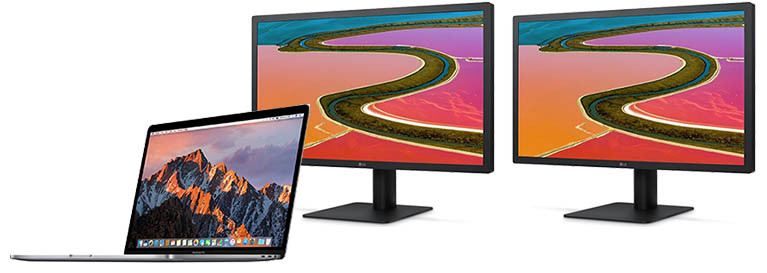Apple’s investment in AMD GPUs for the new MacBook Pro is a massive win

The new MacBook Pro has leveled up, by finally downgrading Intel’s graphic support to a fallback position, with AMD Polaris as the new quarterback of the Pro field.
A switch was expected by everyone who has been pining over a whole new level of GPU for the MacBook Pro.
Prior to this brand new incarnation, the MacBook Pro received merely incremental upgrades. Now, Mac users can be hopeful to get the same, or better graphic performance in 3D and VR, as Windows PC users, sooner or later, along with a number of very attractive perks.
Integrating a discrete AMD GPU in the new MacBook Pro has unleashed previously unseen potential for Apple’s flagship laptop, including the ability to drive two 5K displays simultaneously, at 60Hz refresh rate, a feat that is still out of reach of most laptops on the market.
If that weren’t enough, the new MacBook Pro can handle up to four 4K displays, also at 60Hz, via USB Type-C connector (Thunderbolt 3).
Intel Iris chips lack Multi-Stream Support (MST), which allows for multiple 4K/5K displays to be driven simultaneously. This ability comes natively with Kaby Lake CPU’s, unfortunately, the 7th generation chip has yet to hit the mainstream, and even then, appropriate graphic hardware will still be a requirement to handle not only display support, but also the ability to push a massive volume of pixels on multiple displays, at 60Hz and beyond.
Some have questioned why Apple did not go with NVIDIA’s Pascal architecture, which offers 3D/VR-worthy performance, and the answer can be a little complicated.
The reason why Apple opted for AMD rather than NVIDIA has to do with the fact that while Pascal supports DisplayPort 1.3, Thunderbolt 3 is supported by a wider range of monitors. DisplayPort 1.3 offers a much higher bandwidth, and NVIDIA’s GTX chip is certainly unrivaled, but when it comes to Apple devices, the emphasis is on the user, and on compatibility with the latest technology, not including the one which has yet to go mainstream.
Undoubtedly, should NVIDIA still retain its GPU sovereignty, it will eventually become a natural choice for Apple, especially if the market for professional workstations makes a comeback and justifies a redesign of the Mac Pro, or something greater, powered by a new breed of 3D/VR-ready GPUs.
Should such scenario materialize, it will also be a good time for Apple to manufacture external displays again. At any rate, all we can do is wait and see.
For the moment, however, by the looks of the latest MacBook Pro, Apple is definitely heeding the pleas for more graphic power, and better external display management.
With that in mind, let’s not discount AMD’s capability as a GPU manufacturer. AMD’s Polaris architecture has performed extremely well, and graphic performance of the latest MacBook Pro have almost tripled, compared to its predecessor.
Ready to shop?
If you are looking for the perfect MacBook, PortableOne has you covered with a great selection of Apple MacBooks, as well as the newly unveiled 13 inch and 15 inch MacBook Pro with TouchBar.